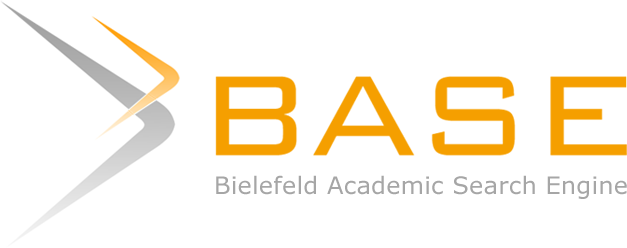Pembelajaran Berbasis Heutagogi Di Pendidikan Tinggi Digital: Tinjauan Teoretis, Sintesis Literatur, Dan Implikasi Masa Depan
Keywords:
Heutagogy, digital hinger education, lifelong learning.Abstract
The rapid development of digital technology in higher education has driven the need for a new learning paradigm that is more student-centered and able to equip them with lifelong independent learning skills. Heutagogy or self-determined learning emerged as a continuation of andragogy in an effort to face these challenges. This review article discusses the theoretical basis of heutagogy along with related concepts such as andragogy, cybergogy, peeragogy, and synthesizes the latest research findings on the application of heutagogy-based learning in digital higher education environments. The literature review shows that the heutagogy approach with its characteristics of independent learning, deep reflection, non-linear learning, and capability development is increasingly relevant in the era of Education 4.0. Recent studies report the implementation of heutagogy principles in curriculum design, technology utilization (e.g. mobile learning, AR/VR, and artificial intelligence such as ChatGPT), and teacher training programs that generally have a positive impact on student engagement, self-regulation skills, and readiness for lifelong learning. The critical discussion in this article highlights gaps and challenges including educator readiness, curriculum adaptation needs, and infrastructure in identifying opportunities for broader implementation of heutagogy. The article concludes with practical implications and strategic recommendations for educators and policymakers to adopt heutagogy principles in creating an innovative, inclusive, and sustainable digital higher learning ecosystem in the future.
References
Amiruddin, Baharuddin F. R., Takbir, Setialaksana, W., & Nurlaela. (2023a). Andragogy, peeragogy, heutagogy and cybergogy contribution on self-regulated learning: A structural equation model approach. International Journal of Instruction, 16(3), 1-18. https://doi.org/10.29333/iji.2023.16330a
Amiruddin, Baharuddin F. R., Takbir, Setialaksana, W., & Nurlaela. (2023b). May student-centered principles affect active learning and its counterpart? An empirical study of Indonesian curriculum implementation. SAGE Open, 13(4), 1-12. https://doi.org/10.1177/21582440231214375.
Arones, M., Chauca, C., Phun-Pat, Y., Curró-Urbano, O., & De la Cruz-Arones, M. (2025). Heutagogical learning and the use of ChatGPT in the pre-professional practice of university students. In Proceedings of the 52nd ACM Technical Symposium on Computer Science Education (SIGCSE) – Volume 2 (Article No. 3702185). https://doi.org/10.1145/3702163.3702185
Ashton, J., & Elliott, R. (2007). Juggling the balls – study, work, family and play: Student perspectives on flexible and blended heutagogy. European Early Childhood Education Research Journal, 15(2), 167-181.
Ashton, J., & Newman, L. (2006). An unfinished symphony: 21st century teacher education using knowledge creating heutagogies. British Journal of Educational Technology, 37(6), 825-840. https:// doi.org/10.1111/j.1467-8535.2006.00662.
Bhoryrub, J., Hurley, J., Neilson, G. R., Ramsay, M., & Smith, M. (2010). Heutagogy: An alternative practice-based learning approach. Nurse Education in Practice, 10(6), 322-326.
Bizami, N. A., Tasir, Z., & Kew, S. N. (2023). Innovative pedagogical principles and technological tools capabilities for immersive blended learning: A systematic literature review. Education and Information Technologies. https://doi.org/10.1007/s10639-022-11243.
Blaschke, L. M. (2012). Heutagogy and lifelong learning: A review of heutagogical practice and self- determined learning. The International Review of Research in Open and Distance Learning, 13(1), 56-71.
Canning, N. (2010). Playing with heutagogy: Exploring strategies to empower mature learners in higher education. Journal of Further and Higher Education, 34(1), 59-71.
Canning, N., & Callan, S. (2010). Heutagogy: Spirals of reflection to empower learners in higher education. Reflective Practice, 11(1), 71-82.
Gardner, A., Hase, S., Gardner, G., Dunn, S. V., & Carryer, J. (2008). From competence to capability: A study of nurse practitioners in clinical practice. Journal of Clinical Nursing, 17(2), 250-258. https://doi.org/ 10.1111/j.1365-2702.2006.0188.
Handayani, S. M., Yeigh, T., Jacka, L., & Peddell, L. (2021). Developing a heutagogy approach to promoting teacher competencies in Indonesia. Cypriot Journal of Educational Sciences, 16(3), 939-951. https://doi.org/10.18844/cjes.v16i3.5765.
Handayani, S., Peddell, L., & Yeigh, T. (2023). Participants’ experiences in heutagogy teacher professional education in Indonesia. Australian Journal of Teacher Education, 48(6), 1-15. https://doi.org/ 10.14221/1835-517X.5739.
Hase, S., & Kenyon, C. (2000). From andragogy to heutagogy. UltiBase. Retrieved from http:// ultibase.rmit.edu.au/Articles/dec00/hase2.html
Hase, S., & Kenyon, C. (2007). Heutagogy: A child of complexity theory. Complicity: An International Journal of Complexity and Education, 4(1), 111-119.
Hase, S. (2009). Heutagogy and e-learning in the workplace: Some challenges and opportunities. Impact: Journal of Applied Research in Workplace E-learning, 1(1), 43-52. https://doi.org/10.5043/impact.13
Knowles, M. (1975). Self-directed learning: A guide for learners and teachers. New York: Cambridge Adult Education.
Lyz, N., & Lyz, A. (2023). The phenomenon of self-education: Review of world research contexts.
Education and Self Development, 18(4), 195-210. https://doi.org/10.26907/esd.18.4.10
McAuliffe, M., Hargreaves, D., Winter, A., & Chadwick, G. (2008). Does pedagogy still rule? In Proceedings of the 2008 AAEE Conference (pp. 1-6). Yeppoon, Australia.
McLoughlin, C., & Lee, M. J. W. (2010). Personalised and self‐regulated learning in the Web 2.0 era: International exemplars of innovative pedagogy using social software. Australasian Journal of Educational Technology, 26(1), 34-49.
Merriam, S. B. (2001). Andragogy and self-directed learning: Pillars of adult learning theory. New Directions for Adult and Continuing Education, 89, 3-13.
Mezirow, J. (1997). Transformative learning: Theory to practice. New Directions for Adult and Continuing Education, 74, 5-12.




3.png)








